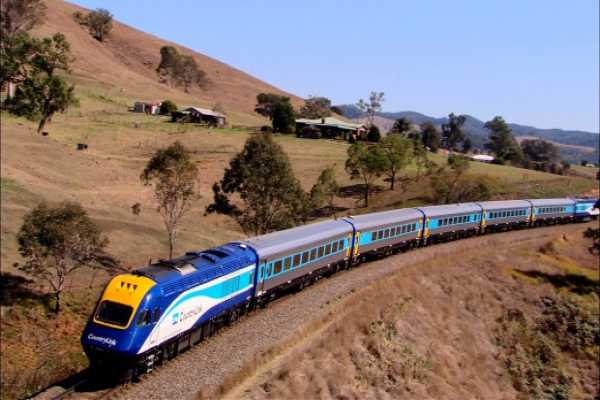Published on the 17/08/2017 | Written by Daniel Churches

Australia’s growing population is causing headaches for transport planners – but answers can come from analytics, says Daniel Churches…
The headaches are exacerbated by Australia’s love affair with the car. Ownership and usage is very much part of daily life with people using cars for everything from their daily work commute to shopping and leisure-related activities. With the population of Australia’s biggest cities consistently climbing, road networks are struggling to cope with the ever-rising demands being place upon them. As a result, traffic delays are becoming more common which cause knock-on effects such as increased travel times, frustrated drivers and more pollution. To counter these issues, transportation planners must design and build efficient and cost-effective public transportation systems. Projects range from the extension of existing infrastructures such as train lines to the introduction of new options such as light rail networks. However, as well as creating these facilities, planners must find ways to encourage more people to leave their car at home. Operators need to ensure that public transportation networks function efficiently and provide a dependable service. It doesn’t take many train delays or bus schedule hassles before people turn their back on the system and revert to car usage. The role of data analytics in public transport A number of the papers published as part of the project highlight the need for interconnection of every element of a public transport eco-system, thus providing real-time data. Analysis can then augment intelligence and manage anomalies in real-time. For example, predictive maintenance of trains, buses and other equipment can be scheduled to minimise vehicle breakdowns, the great bugbear of commuters. Vehicles can be removed from service outside peak demand periods, keeping service level impact to a minimum. Data feeds from sensors can provide details of regular traffic congestion incidents, supporting planning of more efficient bus routes as well as managing peak-period passenger flows at bus stops with more frequent services for the most popular routes. This may sound complex, but there are already many countries in which data analysis is being used to help manage public transport issues. What might Australian cities learn from best practices around the world that are alleviating these challenges for transport authorities, service providers and consumers? Lessons from abroad The report cites as an example the fact that Israel has introduced a 13-mile fast lane on Highway 1 between Tel Aviv and Ben Gurion Airport. The lane uses a toll system that calculates fees based on traffic at the time of travel. To make it work, the system counts the cars on the road and can also evaluate the space between cars to measure congestion. This is real-time pattern recognition of a very high order. The information is then put to use in a way that increases “throughput,” or the amount of traffic the road can bear. If traffic density is high, tolls are high. If there are fewer cars on the road, charges are lowered. This not only keeps toll revenues flowing but also reduces congestion by “steering” demand. Holland, too, is benefiting from the application of big data analysis. Dutch Railways provides rail services on the Dutch main-rail network and international services to other European destinations. Running these vast networks gives Dutch Railways access to huge amounts of data, collected through intelligent train technology, ticketing systems, travel information real-time monitoring and services for maintenance and control unit staff. Until now, train suppliers delivered all this IT and so each type of train had its own IT environment, making it difficult to work together and maintain each system. Dutch Railways had a vision to integrate all this information to deliver more reliable and better service to customers. Using streaming analytics, in-memory computing, integration and messaging software, Dutch Railways now provides real-time information about train services and maintenance scheduling. Commuters are also able to use a travel planner application to ensure a seamless and prompt commute. The clear conclusion is that digitising infrastructure networks can improve forecasting, promote reliability and increase efficiency. Next steps Effective sharing of transport data among all the stakeholders – transport operators, system providers and citizens alike – will help to speed up the development of practical solutions to reduce congestion, improve wait times and overcome commuter inconvenience. Embracing technology in this area will not only improve the daily lives of city residents, but also serve as an important step in the journey to making Australia a smarter nation. Daniel Churches is Regional Vice President for ANZ at TIBCO
Data analytics has an important role to play, and evidence can be found in a recent project at the US-based MIT Department of Urban Studies & Planning.
According to a report by McKinsey & Company, the collection and strategic use of information can improve forecasting and help nudge behaviour in ways that improve the reliability of transport infrastructure and increase its efficiency and utilisation.
Across Australia’s growing cities, governments and public transport operators must begin to open up and share the data already being gathered with start-ups and entrepreneurs who can put it to use in new and innovative ways. They will be able to explore and use it to drive the kind of innovation that the country needs.




























